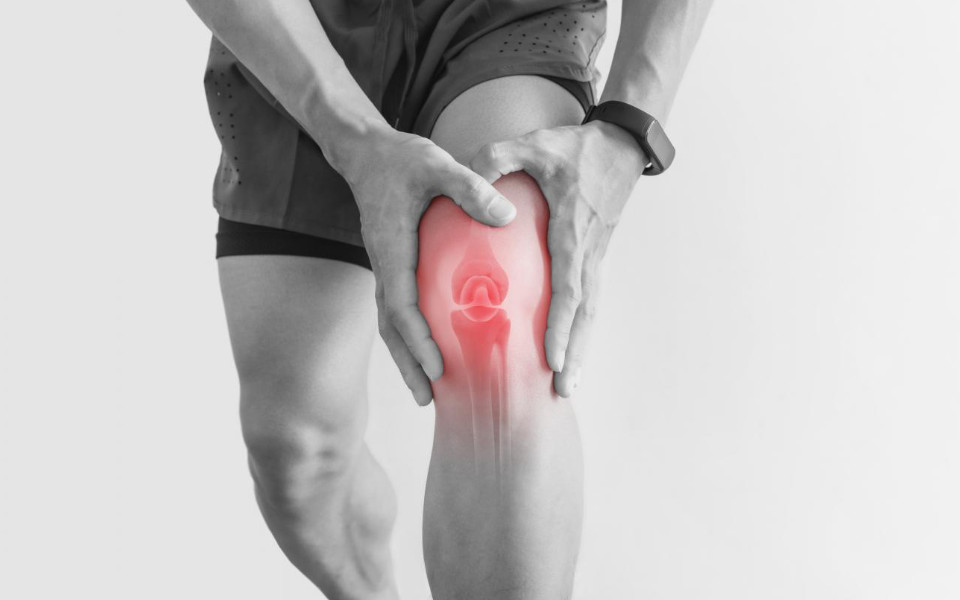Over the years, arthritis come about every so often. At the beginning, it has been apparent for adults that goes all the way through the elderly population. However, as time passes, younger population is also starting to develop this lifestyle disease.
Like any other lifestyle-related disease, arthritis is probably a condition that can be deemed as preventable, and to actually push it further, it can somehow be reversible if assessment and commitment to lifestyle changes will be put in place. After all, what’s there to lose if changes will be made for the better, right?
Honestly, much has been said about arthritis. And perhaps some of the stuff you have seen or read might be vague, or worse, might not be completely true.
So, let’s unwrap the facts and science behind arthritis, shall we?
What is arthritis?
Traditionally, arthritis is defined as inflammation of the joints. And yes, this is an absolute fact. Now, inflammation may seem overwhelming in hindsight, but, to put it in a better perspective, if a person struggles with inflammation, particularly arthritis, then joint pains, swelling, localised aching in certain parts of the body or even stiffness may be experienced.
In addition to that, arthritis is actually a cobweb of inflammations surrounding other parts of the body, specifically the joints and their connective tissues. This is the exact culprit why there are other clinical terminologies that come about when arthritis is being talked about. To date, there are approximately 100 rheumatic diseases that are within this cobweb of arthritis.
But, fear not, because we will be discussing them in a manner that’s less intimidating and easy to understand! Here are the most common types of arthritis that most number of the population might be susceptible to, at any given time.
Types of Arthritis

1. Osteoarthritis
Have you ever heard of the term “wear and tear”? That’s exactly what osteoarthritis is. You might come across this term from countless resources because this is the most common form of arthritis.
Osteoarthritis is the type of arthritis that’s specifically targeting the cartilage. This part of the body seems to take very little space from the inside, but its primary function is to allow seamless movement of the joints for functional movement and for the body to be flexible enough without getting injured.
Now that you know which part it affects, the next is what damage does it cause if osteoarthritis will be detected? Well, this condition could significantly deteriorate the cartilage, making it thinner and lose its texture that can eventually lead to the bone completely losing its shape. To add to this, there are cases wherein the joint can change its original form when the body starts to adjust from the deterioration of cartilage.
Of all the types of arthritis, this can significantly deteriorate a person’s range of motion. Mobility and quality of life may be seriously affected if no course of action will be set in place as part of treatment.
2. Rheumatoid arthritis
This is the type of arthritis wherein the immune system works more than how it is expected. To make it clearer, the immune system happens to overstimulate itself due to a number of factors. Following this phenomenon is the body’s innate response to react and protect the body, and this is when the swelling, pain, stiffness and redness might start to manifest and become more and more evident.
Rheumatoid arthritis is also known to hit the spot right at the bone as well as the joints attached to it. Most often than not, this type of arthritis normally attacks the hands, wrist, and even the knees. Furthermore, the most common clinical changes that happen if arthritis in the hands are becoming more serious, it can change its shape, leading to deformity. At the same time, stiffness and pain may linger over time.
3. Gouty arthritis
You can simply set the gouty arthritis apart from all other types of arthritis because it begins as a localised joint pain in a single area of the body, and the pain would normally appear one at a time. This one at a time localised joint pain is what we call as gout. However, over time, if no management or treatment will be conducted in the affected joint, reoccurring pain or flares may re-surface, and this eventually leads to gouty arthritis.
Aside from the pain scale, gouty arthritis also appears to be lingering or long-lasting. For some, pain lasts for several days up to weeks if no course of action or medication is taken. Like osteoarthritis, gouty arthritis can significantly affect mobility if no management is done immediately.
4. Psoriatic arthritis
Psoriatic arthritis mostly affects individuals who are previously diagnosed with a skin condition called psoriasis. However, in some situations, joint pains may develop first, followed by skin flare-ups soon after. Either way, the symptoms and discomforts are relatively the same as the other types of arthritis. The only difference is that the skin is greatly affected that manifests as skin flare-ups.
Like osteoarthritis, the prognosis of psoriatic arthritis is highly dependent on the body’s immune system function. An episode in which the immune system happens to overstimulate itself and cause issues in the skin and joints primarily.
You may have heard as well that this type of arthritis is treated with the use of NSAIDs or non-steroidal anti-inflammatory drugs. This treatment’s general objective is to reduce inflammation in the body as well as to manage the pain.
There’s so much more to add in this list, some may be auto- immune in nature or simply rooted from inflammation, but nonetheless, the manifestation or beginning symptoms may look alike. Also, the season or life stage of its onset may differ in each individual. That’s why it’s equally important to detect the symptoms right away and address them as soon as it appears before it develops into a more serious condition. Also, early detection can avoid dependency on medications.
What are the Symptoms of Arthritis?
Now that you have a better understanding of what arthritis is, of course there’s so much to know about this condition. Interestingly, because it is mostly targeting the same area of the body which are the joints, cartilage and bones, the symptoms of arthritis and its types are somewhat similar in a nutshell, and here are they:
- Pain
- Stiffness
- Swelling
- Redness
- Limited or decreased mobility
Each type of arthritis may differ in terms of severity of pain, area on where the pain may start and even which joint the discomfort may be rooted.
Case in point, there are sensible treatments or management that can be done especially when arthritis is confirmed or diagnosed. Like any other condition, it’s always best to explore possibilities where in arthritis will be cured or as early as possible be prevented in any way.
What are the Causes of Arthritis?
It also helps to re-visit your current habits or lifestyle. Are your habits contributing for you to develop arthritis over the years? That’s why it’s important to have self-check every once in a while.
In this part, nothing is more vital than nipping this in the bud. But, there’s another layer in understanding this condition, and that’s by distinguishing the causes or the potential culprit of why we develop arthritis. Here are the reasons why:

1. Impaired immune system
To be very clear, the function of the immune system is very straightforward. Its ultimate goal is to harness the body against any threat of disease that may leave the body compromised. Nothing is more important for the immune system than protecting the body from pathogens. Its goal is to keep the body’s strength and capacity to sweep off toxins and prevent onset of disease.
However, the immune system may get out of whack if inflammation gets out of hand. If this happens, an overstimulation of the immune system can further build-up leading to chronic inflammation, which can be self-destructive for the whole body. This is the exact culprit why arthritis appears. When this happens, the immune system attacks the healthy cells which gradually deteriorates the body’s normal function.
2. Faulty movement
Imagine making a wrong turn in which the joints in the body suffer from an injury. That in itself is already an inflammation brought by trauma or injury. An incident as miniscule as this can actually cause serious effect to the connecting part of the body, particularly a cartilage, a small joint or even a piece of bone.
That’s why it is essential to have a workout in place that the body can actually handle and recover wisely. This is to promote rest and recovery for the muscles and the bones. If the workout routine or even simple chores life lifting heavier than what the body can handle, it can overwhelm specific parts like the joints which can cause injury, hence, inflammation brought by trauma. It can be a default protocol to have your fitness level assessed first before jumping into a new workout programme. This helps evaluate your body’s capacity and avoid mismatch which may lead to wrong movement and injury.
You see, everything is connected with one another, right?
3. Overweight
Excess weight which happens to be concentrated in the upper body, all the way down to the lower extremities, may cause the joints to be under a lot of stress, which then leads to compromised blood flow. This restricts the flow of oxygen as well as water which lubricates the joints to maintain its function. If this continue to happen, the joints may lose its normal structure and cause pain radiating to the bones.
Aside from the fact that weight contributes to pain, it can also drastically limit a person’s movement or mobility. This alone may cause delay during management and treatment of arthritis.
4. Poor eating habits
There are countless studies showing that very high intake of salt in a person’s daily food intake can trigger symptoms of arthritis.
Foods coming from fast food, specifically the ones that are loaded with oil and salt are known to increase oxidative stress. If the body is chronically exposed to oxidative stress brought by food, this can eventually lead to chronic inflammation which snowballs to arthritis. Well in fact, arthritis may only be tip of the iceberg, but there are a bunch of serious conditions that can be caused by very poor eating habits, including obesity, cardiovascular disease and even cancer.
Interestingly, saturated fat is known to stimulate inflammation further, causing the arthritis symptoms to even get worse!
After this list, there’s only one way to move forward and that’s to step up and make small changes for prevention and even possible cure for arthritis. Like any other list of tips you can find, expect better and favourable results if all these suggestions will be taken into account and will be executed well.
How to Prevent Arthritis?

Finally, your eyes are now wide open! Now you have the capacity to prevent and even lower the risk of developing arthritis at any point in time. As we all know, looking at the bright side and knowing better to avoid disease will always go a long way.
In the prevention of arthritis, there are realistic solutions and ways to go about it. Here are some:
1. Boost your immune system
There’s no better way to skip disease particularly arthritis but to keep your immune system attuned preferably at all times. This area seems to be pretty tricky for some, because truth be told, boosting your immune system can save you!
Probiotics are your defense mechanism that your immune system needs. Probiotics are your good bacteria that keeps the immune system at its best. They are the body’s line of defense that detects and fights off inflammation, which by now, we know is a huge threat to the body’s immune system.
To date, there are countless brands, that come in various forms when we speak of probiotics. Some are in powdered form, tablet or capsule, some even come in drops or liquid form. Ultimately, there are no limitations as to how much probiotics a person can get on a daily basis. This is because since birth, we are wired to acquire billions of good bacteria to keep our immune system up. So, don’t fret, and consider taking probiotics as early as now! On the other hand, there are wide variations of what we call as probiotic foods including kombucha, kimchi, yogurt, and kefir. Probiotic foods are fermented long enough for the good bacteria to populate in those foods mentioned. In this way, you can get your probiotics in whichever way you prefer!
2. Move daily
Create a cycle or routine in which physical activity is squeezed in a person’s daily schedule in a realistic and doable manner.
Movement is vital in the prevention (and even cure) of arthritis. This helps the body reach an ideal rhythm wherein the blood circulation, hormone regulation and excellent food choices will eventually come into play. At the same time, regular physical activity promotes bone health and supports healthy weight that all leads to path in the prevention of arthritis.
Being active is actually a gift that keeps on giving! Aside from the promising benefits mentioned above, regular physical activity stimulates the functionality of other parts of the body such as respiratory and cardiovascular health.
If you still can’t decide which activity fits you and your fitness level, go with the bare minimum and just walk. 20 to 30 minutes of walking is already a good start!
3. Eat healthy
This aspect of preventing arthritis might be the most easy-going or can come as difficult for the majority of the population. Traditionally, people are wired to nit-pick which food items could’ve caused issues like arthritis. But, over the years, that may not always be the case.
Reading the food labels of ready-to-eat foods that may contain damaging ingredients can massively affect a person’s pre-disposition in developing arthritis later on. The use of enormous amount of refined sugar, salt, synthetic sweeteners, food colouring can trigger the body to develop inflammation, which includes arthritis.
In the end, choosing whole grains, fresh-caught seafood and grass-fed red meat, and of course, fresh fruits and vegetables can never go wrong. Not only it gives the body the most bioavailable sources of macro and micronutrients, but it also infuses the body with phytonutrients to boost immunity and detox the body from toxins.
4. Maintain healthy weight
Keeping your weight in check can do so much in preventing or at the very least, limiting the pain in the joints and cartilage if arthritis happens to be present already. It keeps the connecting tissues intact without bearing so much pain to the joints which can trigger immobility for most people. At the same time, maintaining a healthy weight encourages an individual to build strength and mobility without taking pain medications while trying to do so.
One of the ways and means in keeping a healthy weight is by tracking your sleeping pattern. Not everyone knows how big of a deal sleep can do in fixing up a person’s metabolism and sustaining a healthy weight over a long period of time, particularly for adults. The reason is that, if a person lacks sleep or isn’t getting enough hours of sleeping time, the body suffers from high cortisol (which is also known as the stress hormone). This can lead to compromised metabolism, and ultimately, cause inflammation such as arthritis.
5. Avoid injury
When we speak of prevention, getting rid of any risks that may lead to injury always has to be emphasised. If the joints, connective tissue or even as small as a cartilage has suffered a tear, spasm, or any form of stress and inflammation, it needs to be treated as soon as possible. This is to avoid any more serious problem in the future.
On the other hand, having an injury in relatively the same site or area needs a bit more precaution and more stringent protective equipment in case that it needs to be used. That’s the exact reason why each joint has a designated safety pads and guards, mainly to prevent injury and lessen the risk for potential inflammation.
6. Ask a professional
It will only get better if you have a clear understanding of what the problem is. With the clinical and subjective symptoms aside, only medical healthcare professionals are equipped to diagnose and confirm if you have arthritis or not. Once it is confirmed, the only way is to move forward and take on the most practical steps to healing and recovery.
Diagnosis is equally important with monitoring and observation. Regular check ups which includes blood chemistry, update of symptoms and complying with medications are all part of embracing the fact that management and treatment are needed to be done in this situation. After which, it won’t be long until some or if not, all pills will be removed and arthritis will be completely resolved in no time.
Are there Home Remedies for Arthritis?

When a person deals with arthritis, huge chunk of it would involve pain management. Most often than not, pain would demand for immediate course of action. There are some home remedies for arthritis that can come in handy if pain would re-surface. Here are some:
1. Hold and cold compress
Pressing the joints with hot and cold compress are known to alleviate and decompress pain almost immediately. It relieves the inflammation temporarily, and helps with mobility and flexibility of the joints and its surrounding area. Though this might be temporary relief, it can still release pain and pressure.
2. Acupuncture
This may seem to be not a home remedy, but it can be an alternative treatment for arthritis. In some countries, acupuncture seems to be the initial approach conducted in the same situation. In general, acupuncture locates the area or part where the pain originates, then pain is reduced by puncturing needles simultaneously to release pressure and pain.
It is important to note that this may not be the gold standard across the board, but is now considered as an alternative treatment in some parts of the world.
3. Supplements
The era of taking supplements has taken over in the management of inflammation including arthritis. The most common supplement that’s known to relieve inflammation is turmeric. It plays a vital role in releasing toxins in the body that cause arthritis and even improves blood work.
This approach is becoming more and more embraced by more people since it’s relatively close to food and considered safe if the right doses are taken. Although there are several claims that the use of supplements is very effective, it’s important to note that the other ways of prevention should still be considered moving forward.
For transparency, doing your own research as to what supplement, including its contraindication and other benefits could also be conducted at your own discretion. In this way, you would build trust and confidence that what you’re taking is really helpful in the prevention or cure of arthritis.
Conclusion
Even if arthritis seems to be a common lifestyle condition to most of the population, it shouldn’t be taken lightly especially if it’s highly preventable. After all, no one wants to pop in maintenance pill for the rest of their life, right?
Since this condition has already been studied by almost all approaches and concerns of health and medicine, it’s only right to take the right steps towards prevention and management. As we all know, arthritis is now becoming inter-generational. It may seem that this is something that’s inherited or congenital as most people would say, but that’s not always the case. Chronic inflammation such as arthritis is mistakenly interpreted as something that runs in a family or in the genes because the eating habits, environmental stress factors and even sleeping patterns are somewhat similar, if not, identical in most cases. This is the main culprit why lifestyle diseases like this are now part of the problem health-wise over the years.
But, since we are bombarded with countless of evidence that arthritis is preventable and even reversible, it’s about time to create that paradigm shift and make healthy and sustainable changes, so that in the coming years, arthritis won’t be a problem anymore.
Moreover, there are safe and non-invasive paths in dealing with arthritis, and there’s so much to learn (and even unlearn) about the facts of this condition. Now more then ever, awareness should be emphasised since most of us are presented with twisted myths and limiting beliefs about the prevention and cure of arthritis.
Lastly, cultivating a healthy lifestyle in general can do much, not only in the prevention of arthritis but with other diseases as well. Having the capacity to make better decision with food, physical activity, sleep and stress management can make or break your health. It’s essential to have that conscious choice especially if the threat of disease is already becoming more prominent.


